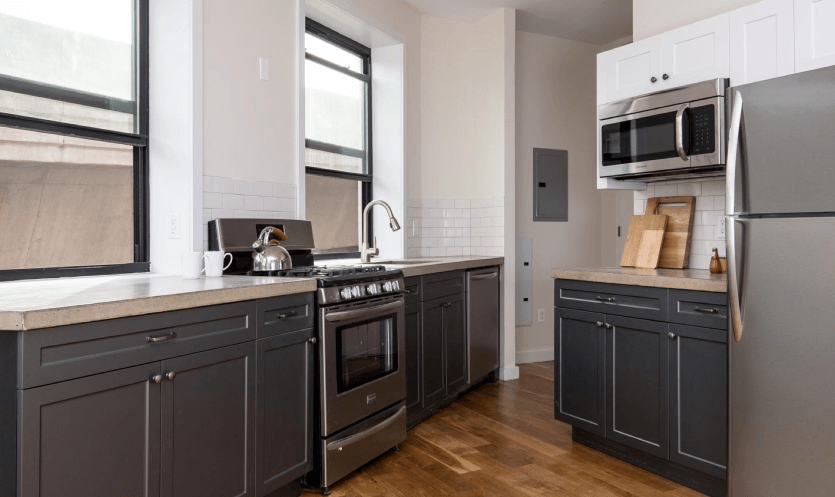In Williamsburg, Live with 50 Roommates for Just $1,800 a Month
You live in New York. Two things you might expect to be below-average experiences here are finding an apartment, and finding suitable roommates. But one day, through the magic of Craigslist or StreetEasy or Facebook, you do find a place to live. Way to go!
Actually, no need to celebrate yet, because the chances that the place you find is more or less fine, or that you have any furniture or plates to put in it, or that the roommates it comes with will, from time to time, sweep your floors or replace toilette paper, or be socially pleasant, are low. Finding a place to live in New York City is already near impossible; but finding one that isn’t total crap and that comes with ok live-ins is closer to miraculous. And thus it was from this mess that Common was born.
Common CEO Brad Hargreaves (who also co-founded General Assembly six years ago) wanted to offer a solution to less than desirable living scenarios through a new kind of communal living: buildings that come pre-furnished with furniture, kitchen staples like coffee, tea and paper towels, free laundry, framed art, building-wide common spaces, a goddamn cleaning service for in-suite common areas, and, yes, pre-screened roommates.
Two buildings in Crown Heights, run by Common, already host 29 residents. This spring in South Williamsburg (at South Third Street and Havemeyer), Hargreaves will open the largest Common building yet: a 12-unit, 51 bedroom haute-shared-living hub, starting at $1,800 per room, per month. Hey, if you want all of your problems taken care of, you’ve gotta pay for that. And we do mean all of your usual apartment problems, including WiFi, heating and air, and utilities; they’re also included in monthly rent.
Hargreaves said that the idea for Common first came to him by hearing stories from General Assembly students in various cities who couldn’t find decent living arrangements. He ran into the same issue when he moved to New York eight years ago. “It was on short notice and with roommates I met on Craigslist,” said Hargreaves, which is to say, he had no control over preferred creature comforts. And from a broader perspective, Hargreaves found the overall apartment-hunt conversation here was negative, which is what I would call a New York City truism for the ages, if I’ve ever heard one.
“I think one of the reasons that living alone is aspirational is because living with roommates is so bad, and not mediated, and you’re lucky if you have friends on the same cycle, but many don’t,” Heargraves explains. Beyond all the physical amenities Common apartments come with, it’s the company—providing actually decent living buddies and building mates that are kind of interesting to hang out with—that Heargraves is most interested in providing. And it is true, most people I know here interact with roommates only to passive-aggressively discuss dishes and Windex purchases, only because they have to.
“There are social events and potluck dinners and every sunday night there is a book club and member movie nights on a regular basis,” Hargreaves tells me. Sometimes, people will announce on the community chat group that they’re making pancakes on the fourth floor and anybody who’s hungry can just pop on upstairs. Quel utopia. Basically, it sounds like college (and maybe equally expensive?), except equipped with way nicer furniture (West Elm and Restoration Hardware), and more high-brow activities (there’s a programmed speaker series, too). Actually, that’s all still pretty collegiate. Unlike college, though, everyone in a Common building does get their own bedroom. And what a bedrooms it is (Casper mattresses in the house!).
But this begs the question: how, exactly, does Common ensure they attract all those fun, nice, social people who don’t suck, and then convince them to live in the same space? Easy. Interviews and background checks, plus tapping into a general sense that each roommate group will wavelength together. What happens if you move in and you still kinda can’t stand someone?
“We haven’t had issues up to this point,” says Hargreaves. “But one thing we offer is that you can switch rooms within the Common network or between buildings, with just a 24 hour notice.”
Once again, sounds an awful lot like my freshman year dorm building—only not with teenagers, more like a bunch of post-doctoral students. “We’re not able to talk extensively about demographics,” says Hargreaves. But generally speaking, people who live in Common buildings even get into their upper 40s. In South Williamsburg, that demographic would kind of act like the building’s wise-old uncle, the dorm proctor, if you will. Sounds kind of fun. And communal. And safe, toilet paper included.
To become a Common member, apply here.
You might also like 





















